Kodak film captures the grandeur of old Budapest and the portents of WWI in 'Sunset'
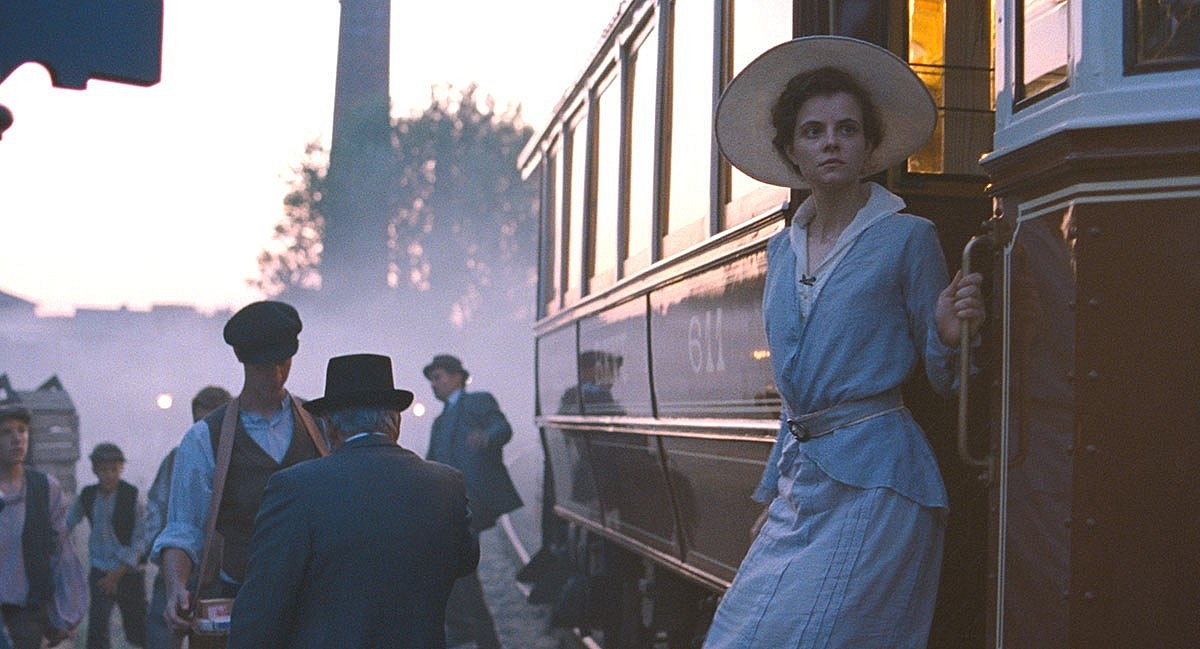
"Sunset", directed by László Nemes. Image courtesy/copyright of Laokoon Filmgroup.
Captured on Kodak 35mm and 65mm film, Sunset (Napszállta), by Hungarian director László Nemes and shot by his longtime cinematographic collaborator Mátyás Erdély HSC, paints a picture of mystery and anxious foreboding as the shadow of WWI fell over Budapest and the declining Austro-Hungarian empire.
Nemes is the director of the highly-acclaimed and Oscar-winning Holocaust tragedy Son of Saul(2015), which was also shot by Erdély and post-produced by the pair on 35mm. Along with 2016 Academy and Golden Globe Awards for best foreign language film, Son of Saul earned an impressive cluster of other top accolades. These include the Grand Jury Prize at the 2015 Cannes Film Festival, while Erdély gained recognition for his stand-out handheld photographic efforts at the world’s leading cinematography events with a Golden Camera 300 at the Manaki Brothers International Film Festival, a Bronze Frog from Camerimage, plus the ASC’s Spotlight Award.
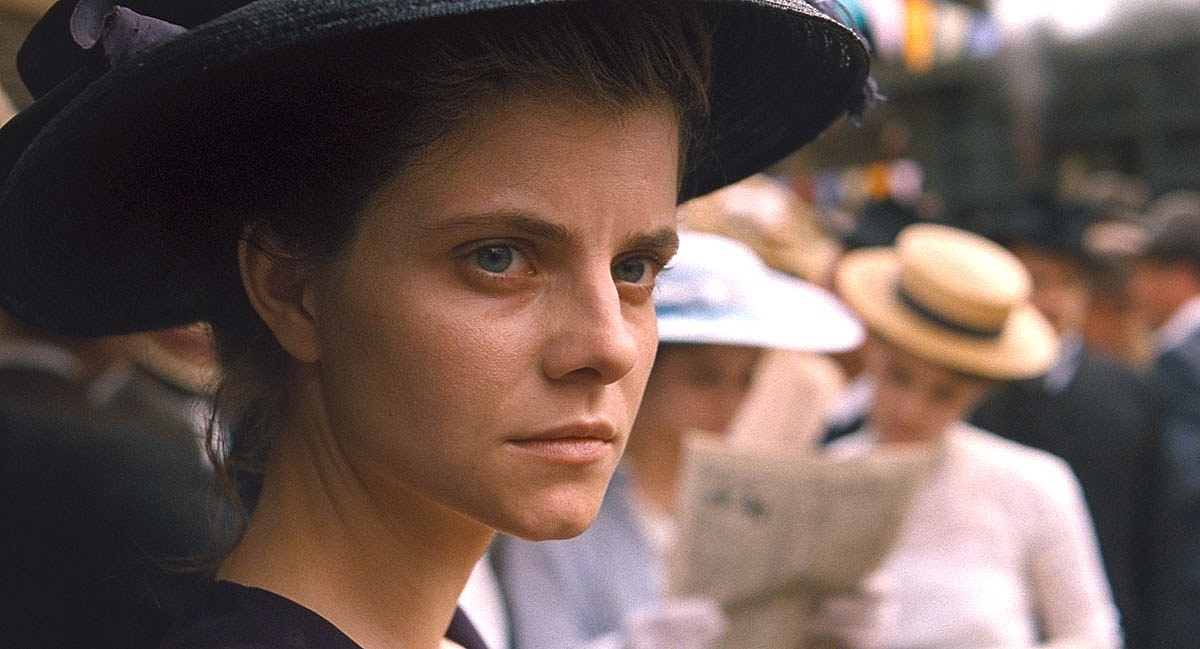
Actress Juli Jakab as Irisz Leiter in "Sunset", directed by László Nemes. Image courtesy/copyright of Laokoon Filmgroup.
Sunset was planned by Nemes and Erdély in a similar cinematographic style to Son of Saul – one that embraces long roving takes, lingering close-ups on the lead character, a shallow depth-of-field enabling the sporadic intrusion of the surrounding situation, and softly-delivered dialogue, as though the speaker were imparting an intimate confidence. As with Son of Saul, critics have raved about the harrowing and breathtaking result of Erdély’s work in Sunset declaring it another landmark in imagemaking that other creators will covet for its framing of numerous impressive scenes.
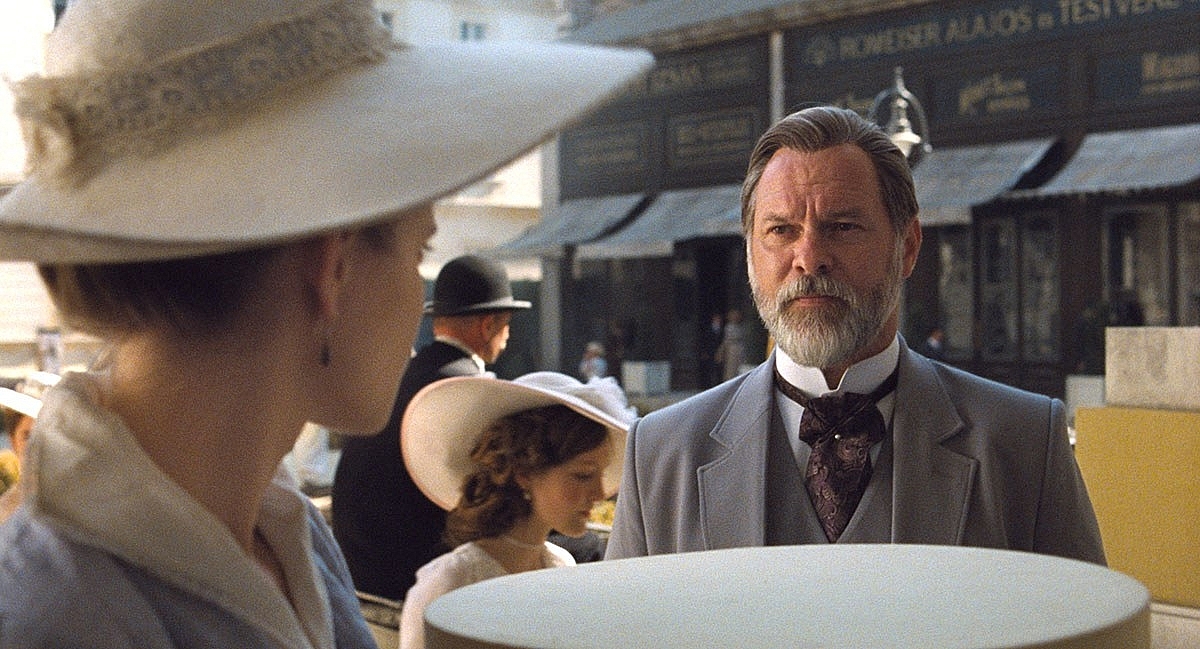
"Sunset", directed by László Nemes. Image courtesy/copyright of Laokoon Filmgroup.
The action takes place in 1913 in Budapest, where the beautiful 20-year-old Irisz Leiter, played by Juli Jakab, arrives in Budapest from Vienna. She has come to take up a post at the renowned Leiter millenary store, established by her late parents and popular amongst Hungary’s upper crust. Tragically, her mother and father perished in a catastrophic fire that engulfed the premises when she was just a small child. The orphaned Irisz was briskly whisked away to Trieste and later trained as a milliner there.
Haunted by the past and wary of the present, she has now returned to her birthplace in search of her wayward brother who, rumor has it, has become a murderous felon involved in a gang of vicious crooks with anarchic terrorist tendencies, who are determined to overthrow the ruling élite. Irisz does not know who to trust, nor what constitutes truth. As she makes exquisite hats for her refined clientele, a low-voice from a shadowy man murmurs, “The horror of the world hides beneath these infinitely pretty things.”
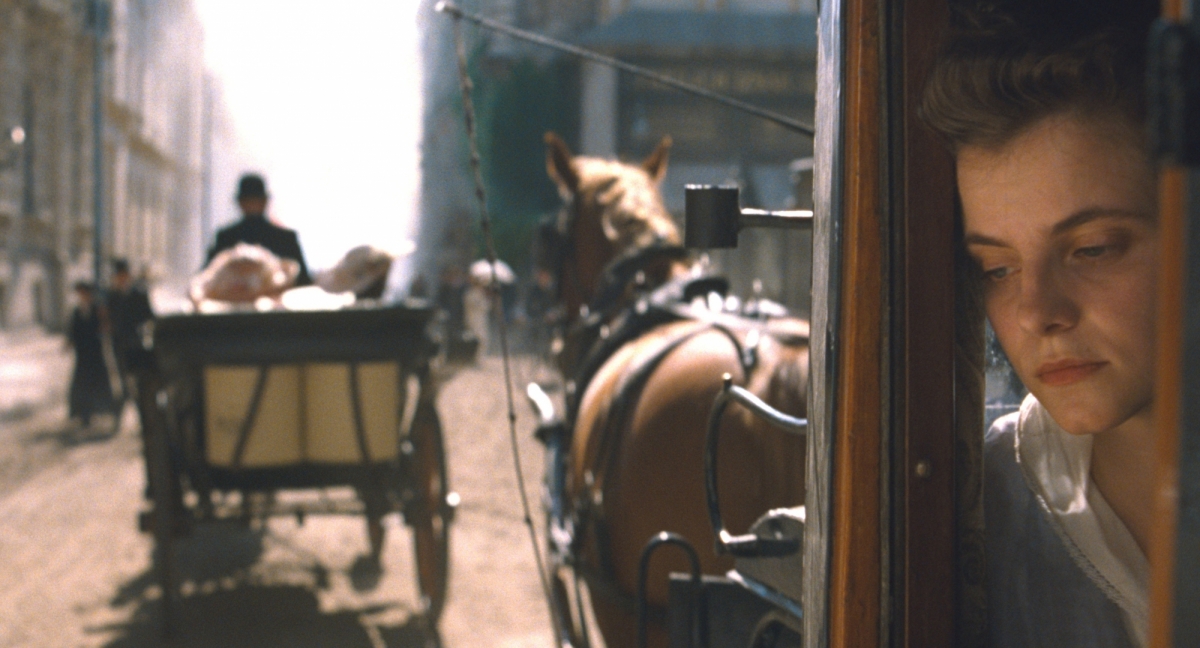
"Sunset", directed by László Nemes. Image courtesy/copyright of Laokoon Filmgroup.
Made on a budget of €6M euros, Sunset was filmed at locations around Budapest over the course of 54 shooting days from June to September 2017. This included a stint in the city’s Palace District, where a large and elaborate set, carefully sited amongst the existing architecture, was constructed, featuring the Leiter Hat Store and its workshop, a town square with cafés, and access to a second-floor apartment with views back over the square.
As they had done on Son of Saul, Nemes and Erdély shot Sunset on 35mm KODAK VISION3 500T Color Negative Film 5219 and completed the post production with a pure, end-to-end, photochemical finish on 35mm, supported by Magyar Filmlabor – the Hungarian Filmlab – using the final film print as the yardstick for the inevitable 4K DCP.
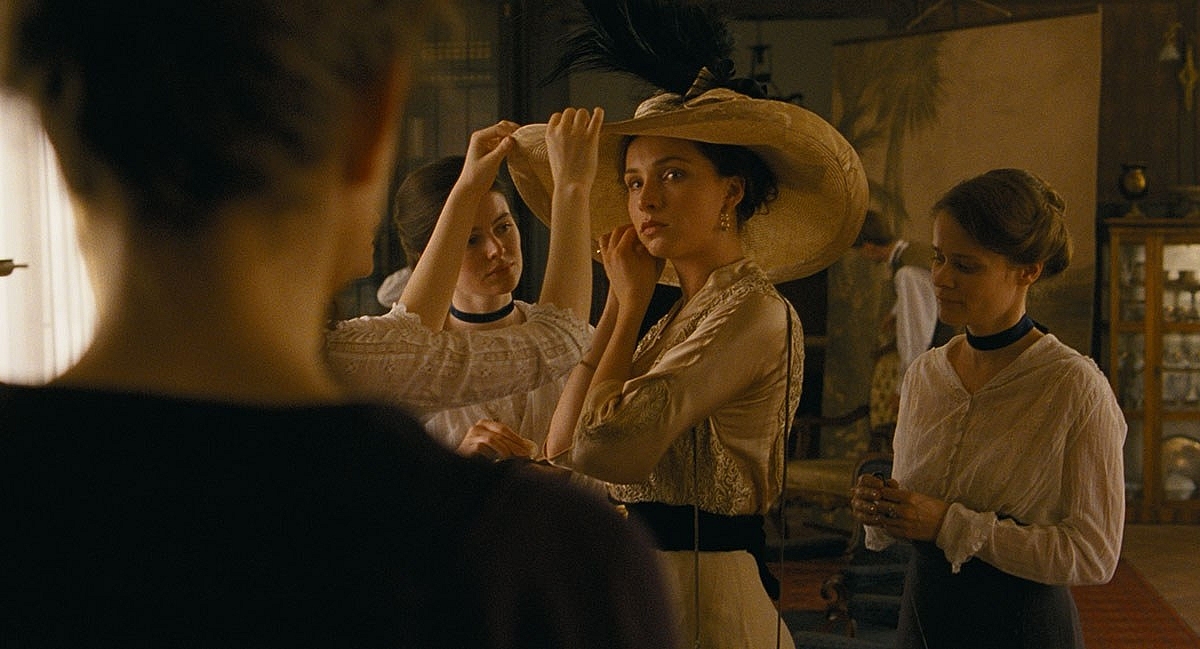
"Sunset", directed by László Nemes. Image courtesy/copyright of Laokoon Filmgroup.
Such is their passion for film, Nemes and Erdély shot the wartime, trench-set epilogue scenes in Sunset using Kodak 65mm film and were able to screen a 35mm print of the final feature, struck from the cut camera negative, when it premiered at the 2018 Venice Film Festival, and subsequently took the prestigious FIPRESCI prize.
After a great deal of testing and debate with Nemes, Erdély elected to shoot Sunset on four-perf 35mm 500T filmstock, in 1.85:1 aspect ratio, using ARRI LT cameras fitted with Cooke S4 lenses.
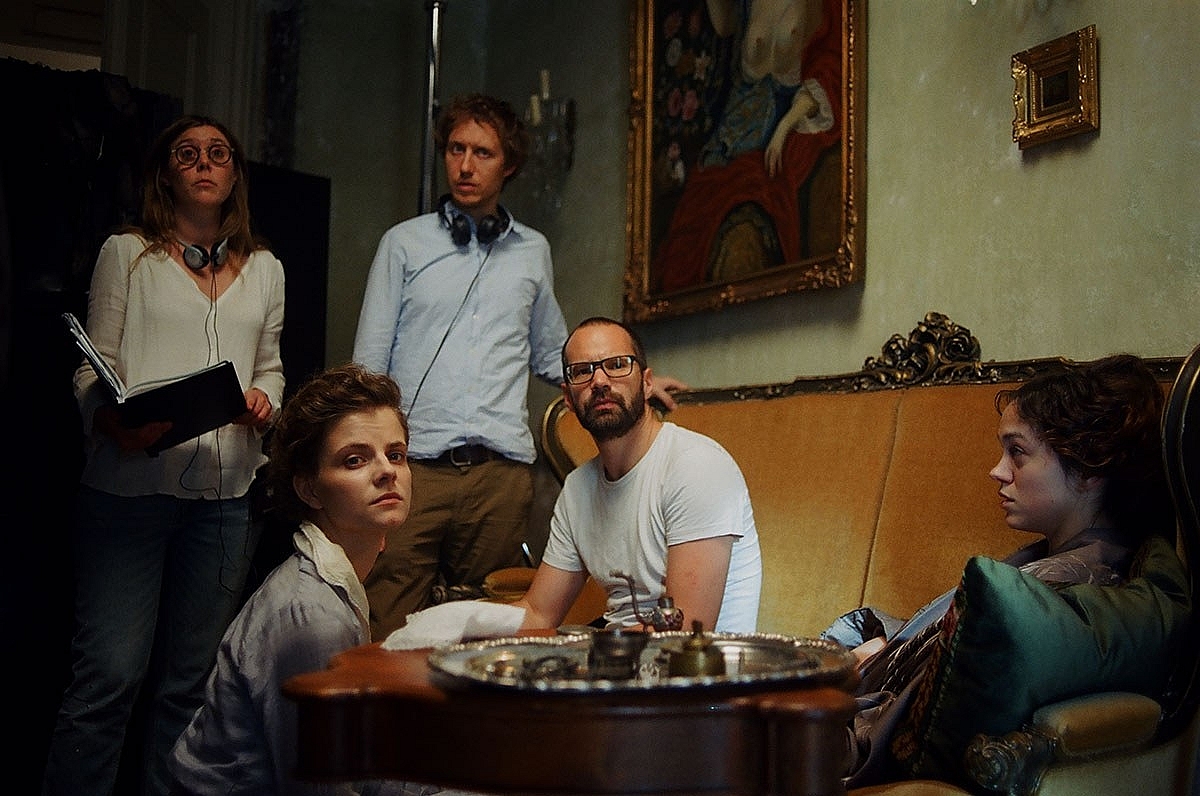
Actress Juli Jakab as Irisz Leiter, with director László Nemes and DP Mátyás Erdély HSC during production "Sunset". Photo by Mate Bartha, courtesy/copyright of Laokoon Filmgroup.
“Our original plan was to frame Sunset in Anamorphic and to shoot from the dolly or sticks and to not go handheld at all,” says Erdély. “But the more we discussed László’s preference to visually present the human experience – subjectively close-up to Irisz or objectively seeing the world from her point-of-view, with a fluid camera style that builds the world around her – we came full circle and back to a similar handheld visual formula that had worked so well on Son of Saul.”
Due of the scale of the production and the task of having to perfect the lighting on ambitious camera moves though a host of different scenes, Erdély entrusted György Réder with the camera operating. “Sunset was the first time I had not operated on a feature film, but György is a genius and captured exactly what we wanted.”
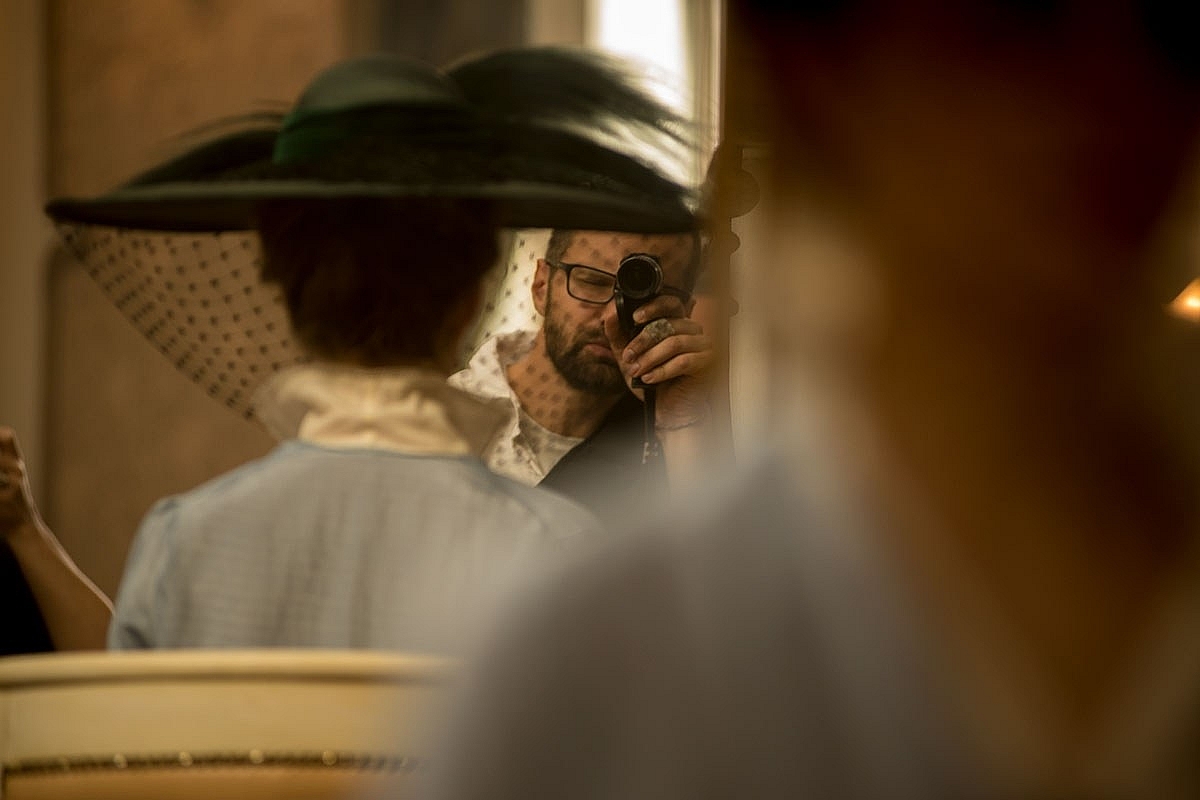
DP Mátyás Erdély HSC eyes-up a shot during production on László Nemes’ "Sunset". Photo by Ildi Hermann, courtesy/copyright of Laokoon Filmgroup.
For their visual inspiration, Erdély says he and Nemes gradually accumulated what turned out to be hundreds of images – photographs and paintings of historic Budapest and its citizens – which eventually covered an entire wall, floor-to-ceiling, of their production offices. He and Nemes also referenced F.W. Murnau’s iconic Sunrise (1927, DPs Charles Rosher/Karl Struss), not especially for its imagery but more for its portrayal of the promise and optimism of human civilisation in order that Sunset could provide a suitable 21st century bookend about the fall of mankind.
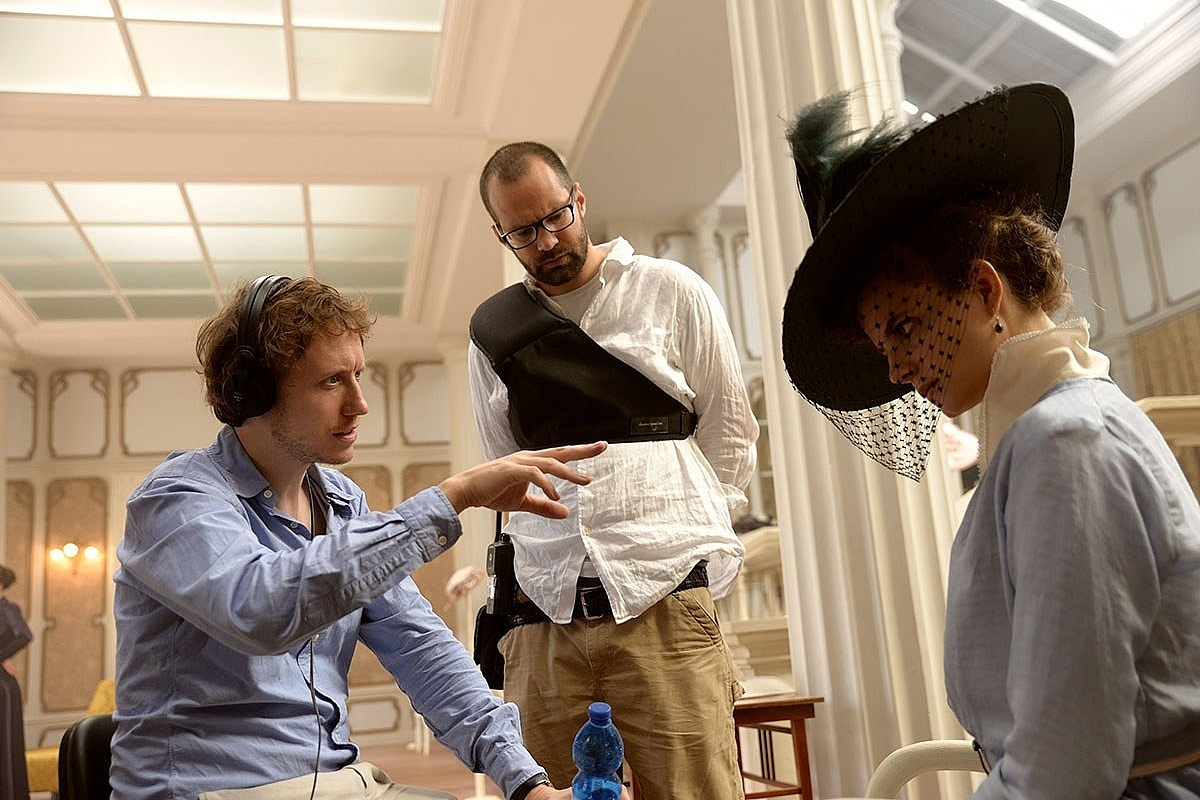
Director László Nemes and DP Mátyás Erdély HSC with Actress Juli Jakab as Irisz Leiter, with during production on "Sunset". Photo by Mate Bartha, courtesy/copyright of Laokoon Filmgroup.
As for the choice of one filmstock, Erdély remarks, “Kodak 500T is simply the best. You can use it in the sharpest sunlight and the darkest moments of the night, and it won’t let you down. I also went with just the 500T for the visual consistency of its fine grain structure, contrast and color saturation across all of our interior/exterior and day/night shooting situations. We see a lot of Irisz in the film, and the 500T is the most visual appealing to my eye when it comes to the faithful rendition of skin tones. Additionally, shooting with one stock is cost effective as you use the short-ends and that results in less waste of stock.”
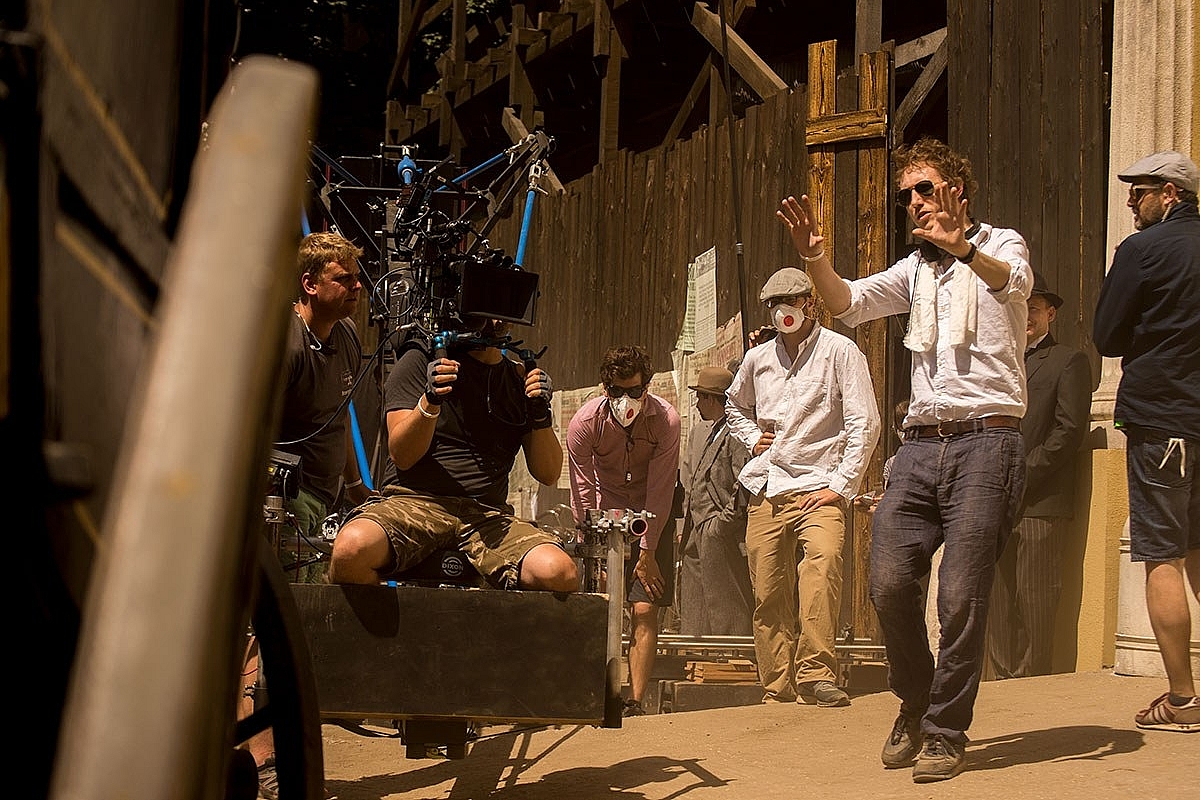
BTS during production on László Nemes "Sunset". Photo by Mate Bartha, courtesy/copyright of Laokoon Filmgroup.
While the mainstay of Sunset was shot on 35mm, Erdély was eager to frame the movie’s disturbing footnote, set in the wartime trenches, with a distinct visual difference.
“The more we discussed this sequence – which could be the true or imagined experience of Irisz – the more we liked the idea of a hyper-real look,” he says. “So we decided to film that sequence on 65mm film, with a long dolly shot through the terrible of filth and dirt of the war-torn ditches. The result of using 65mm is extraordinary, with extreme realism in the detail. I’d love to shoot a whole film on 65mm, that’s my goal.”
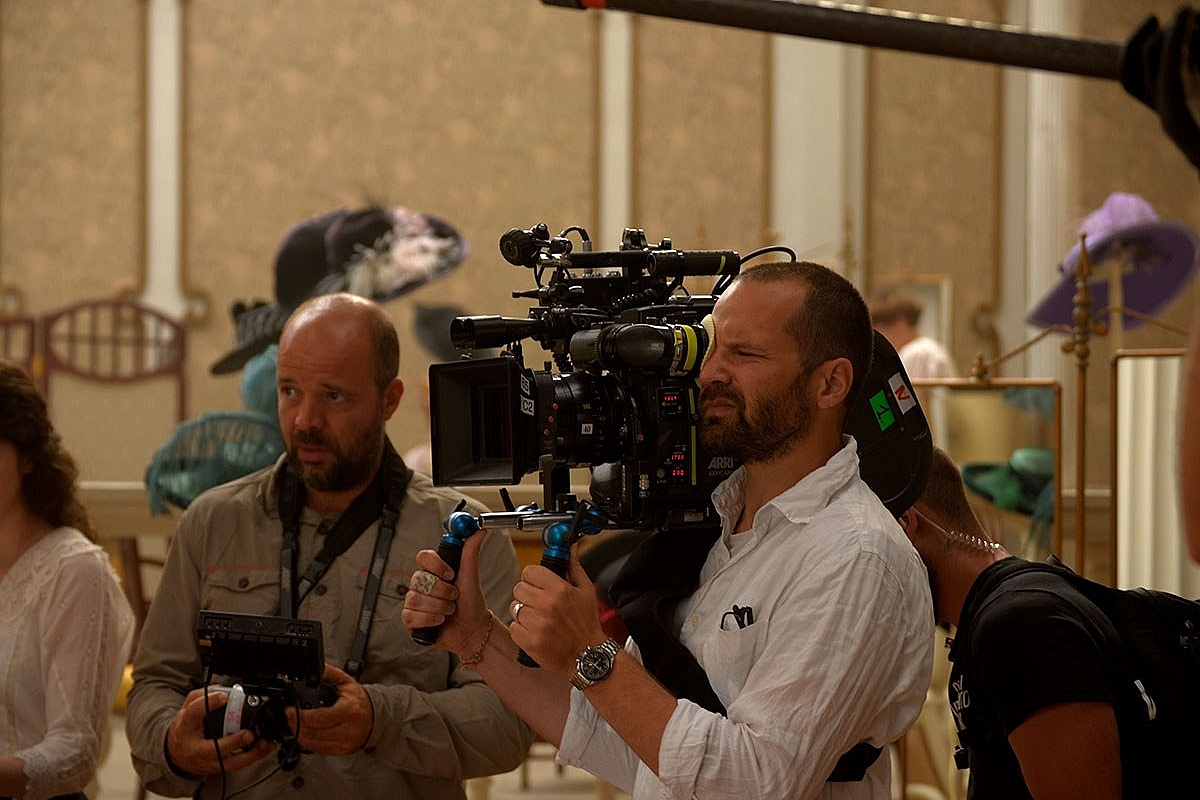
DP Mátyás Erdély HSC shoulders the 35mm film camera during production of László Nemes’ "Sunset". Photo by Mate Bartha, courtesy/copyright of Laokoon Filmgroup.
The 65mm film footage was developed in London at Cinelab.
Erdély, who is currently in the UK shooting The Nest directed by Sean Durkin, on 35mm, concludes: “I am so happy to have shot Sunset on film. Thanks to Kodak celluloid, the nature of its look invites the audience to step back in time, to be immersed in the splendor of pre-war Budapest but to catch more than a glimpse of the dark violence and terror that would all-to-soon befall it.”